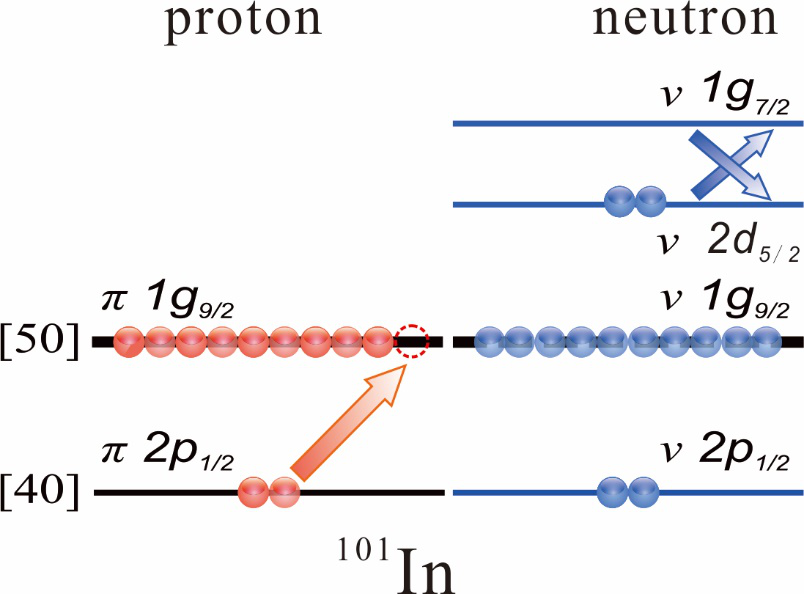Scientists Reveal Type II Shell Evolution in Odd-Z Nuclei
The mass measurement collaboration of the Cooler Storage Ring at the Heavy Ion Research Facility in Lanzhou (HIRFL-CSR) lately reported first precision mass measurements of the isomeric and ground states of 101In. According to the experimental results, researchers had studied the Type II shell evolution in odd-Z nuclei for the first time. On November 27, the results were published in Physical Review C as a Rapid Communication.
Atomic nuclei have closed shells for both protons and neutrons as elucidated in the nuclear shell model, which has been so successful in describing the nuclear structure that it was acknowledged by the Noble prize in physics in 1963.
The shell structure may vary in a phenomenon called shell evolution, which is one of the research frontiers of nuclear physics. Scientists generally focus on how nuclear shell structure evolves with extreme proton-to-neutron ratios from β-stable valley toward the drip lines, termed as "Type I shell evolution". Recently, nuclear theorists proposed "Type II shell evolution", which is due to the change of configuration in the same nucleus. However, only a few cases of Type II shell evolution were studied experimentally, and all of them are even-even neutron-rich nuclei.
Neutron-deficient odd-A indium isotopes have long-lived exited states. These isomeric states provide unique insight into the nuclear structure. Several research groups worldwide have been working on these topics and found such states in A>101 neutron-deficient indium isotopes, but failed in 101In.
By using isochronous mass spectrometry on the HIRFL-CSR, scientists from the Institute of Modern Physics (IMP) of the Chinese Academy of Sciences and their collaborators observed a new isomer in 101In for the first time.
Furthermore, masses of the isomeric and ground states of 101In were measured simultaneously and the excitation energy of the isomer was determined. In order to clearly identify the isomer, researchers employed an in-ring slit to reduce the momentum acceptance of stored ions. As a result, an unprecedented mass resolving power of 330000 was achieved.
The type-II shell evolution in the same nucleus was investigated in odd-Z nuclei for the first time. Both the isomeric state and the ground state in odd-A indium isotopes are one proton hole states, but with holes on different orbitals, thus providing ideal cases for exploring the effect of position of proton hole on neutron energy level. Scientists found that the determined isomeric excitation energy continued a smooth trend of odd-A indium isotopes up to the immediate vicinity of N=50 magic number. Shell-model calculations show that a strong neutron configuration mixing caused by the proximity of the neutron 1g7/2 and 2d5/2 orbitals should be responsible for this phenomenon. Furthermore, when the 101In nucleus is excited from the ground state to the isomeric state, the proton-neutron interaction will lead to an inversion of the neutron 1g7/2 and 2d5/2 orbitals.
This work was supported by the National Key R&D Program of China, key Research Program of Frontier Sciences of CAS, and the National Natural Science Foundation of China, etc.
Link to the paper: https://journals.aps.org/prc/abstract/10.1103/PhysRevC.100.051303

Fig 1. The schematic diagram for the 101In nucleus from the ground state to the isomeric state. (Image by XU Xing)
Contact :
LIU Fang
Institute of Modern Physics
Email: fangliu@impcas.ac.cn



 甘公网安备 62010202000713号
甘公网安备 62010202000713号


